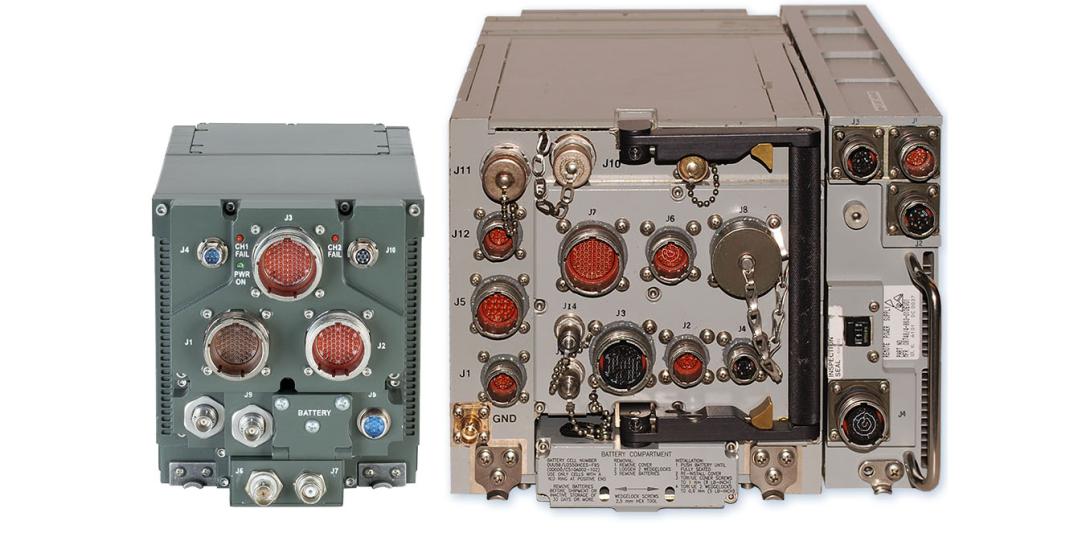Radio Enhances Situational Awareness
While significant improvements in range, speed and lethality of kinetic weapons have been made in recent years, the increased ability to engage an adversary has far outpaced the ability to identify friend from foe. This competing dynamic has contributed to slower progress in the expansion of situational awareness and poses long-standing challenges associated with the fog of war. As a result of this lag, it is increasingly important to arm individual platforms with multiple sources of communications to boost both lethality and survivability.
Although designing and building innovative solutions could address this challenge, budget realities and the urgency of ongoing operations have placed more emphasis on improvements to existing platforms. One approach is to equip current air, ground and sea platforms with the ability to achieve the situational awareness Link 16 can provide. However, taking advantage of this predominantly line-of-sight waveform for tactical data links in existing systems involves internal trades in size, weight, power and cost (SWaP-C).
To address this challenge, ViaSat Incorporated and the Harris Corporation developed the Small Tactical Terminal (STT) KOR-24A. This two-channel radio is designed to meet the needs of users who have SWaP-C constraints but need simultaneous access to Link 16 and either wideband waveforms or legacy communications pathways, including very high frequency and ultrahigh frequency.
The STT KOR-24A enables users to obtain tactical information from a ground network and pass it to and from Link 16, creating seamless situational awareness and a common operational picture between air and ground forces. The radio small form also allows SWaP-constrained platforms with legacy VHF/UHF radios a path to Link 16. For example, helicopters, unmanned aerial vehicles (UAVs), ground vehicles, small boats and small aircraft now can access friendly and enemy air and ground situational data and provide secure and reliable target data to the network.
This flexibility recently helped the U.S. Army upgrade the latest version of its AH- 64E Apache helicopter. The STT KOR-24A enables the helicopter to switch waveforms and network connections on the fly via Link 16 on one channel and soldier radio waveform on the second channel, merge disparate networks, and deliver situational awareness information as a mission unfolds.
The increased situational awareness and command and control capabilities two communications channels provide can address specific mission requirements, including direct communications with ground networks, which decreases the likelihood of fratricide incidents.
The STT KOR-24A’s ability to carry civilian voice and digital radio frequencies also enables organizations such as the U.S. National Guard to communicate with local organizations during disaster response and other homeland defense and security situations.
In addition to meeting the need for simultaneous voice and data communications, the terminal addresses the limited space on legacy platforms. New communications equipment must fit into the previous system’s location, which can cause weight and power issues if it is heavier and more power-hungry than its predecessor. Because the STT KOR-24A is a single radio with two channels, the U.S. Defense Department can remove an existing radio and replace it with additional networking capability without extra power and weight costs.
While the STT was developed to meet the department’s needs for a multichannel radio, it was not developed as part of a formal program. The radio is centered on a commercial model and best practices can be adapted to meet strict performance and environmental requirements, while ensuring a cost-effective development and support structure. Warfighter feedback allows for quick modifications to match the military services’ needs. Terminals in the field can also be upgraded at a substantially faster rate than the normal acquisition process.
As new features are developed, the technical baseline of the radio is adaptable. Customer-driven enhancements include upgrades to support new beyond-line-of-sight waveforms as well as a variety of new Link 16 capabilities enabling broader operations on protected participation group nets, adding another layer of security.
With government cryptographic modernization efforts, security enhancements will have a programmable approach and will be certified and accomplished via software download as well.
More information about the STT KOR-24A is available online.





Comments